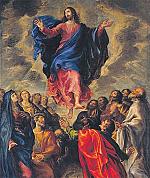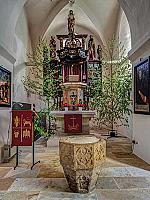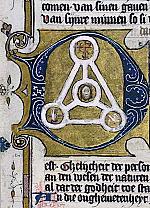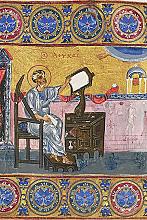Celebrating the risen Savior
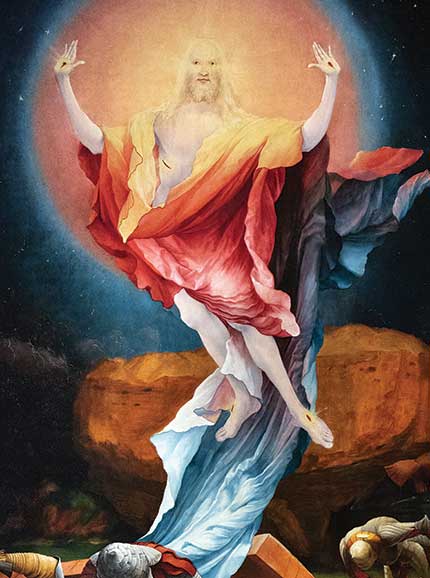
[ABOVE: Matthias Grünewald, Resurrection from Isenheim Altarpiece, c. 1515. Oil on panel—Unterlinden Museum / Public domain, Wikimedia]
If you are in a low church context, you might think of Easter as only a single day. However, it has historically been celebrated as a season, the most glorious and joyful season in the entire church year.
Where did it come from?
In a sense all other Christian festivals radiate out from this one. Jesus’s Resurrection, seen quite rightly as the event on which everything else about the Christian faith depends, was celebrated weekly from the earliest days of the church on Sunday, “the Lord’s day.” Our earliest evidence for the marking of this feast yearly as well as weekly is from the second century, in a homily attributed to Melito of Sardis (c. 100–180). While Easter and Pentecost are not simply adaptations of the Jewish celebrations of Pesach (Passover) and Shavuot, their earliest occurrences resonate against the background of those feasts, since the observance of them was the reason for people’s presence in Jerusalem during the story of Jesus’s Passion, death, and Resurrection and, later, when the Holy Spirit came on the disciples.
The English name for the feast has been a subject of contention. In the eighth century, the Venerable Bede (c. 672–735) claimed the name came from Eostre, an Anglo-Saxon spring goddess; the persistence of this view down to the present day has led some Protestants to prefer to call the day “Resurrection Sunday.” The more likely source is the Latin phrase in albis (in white), eostarum in Old English, because of the custom of people wearing white garments for the first week after their baptism at the Easter Vigil. Some languages use terms drawn from the word “Pascha,” the Greek form of “Pesach” (see pp. 4–5), which gives us the adjective “paschal” for the day and season.
How is the date determined?
Originally the date of Easter depended very directly on the date of Passover. A conflict broke out in the early church over exactly how, though. An Eastern tradition developed that Good Friday should be observed unvaryingly on the same day as Passover, 14 Nisan, the 14th day of the first full moon of spring; thus Easter would always be on 16 Nisan, whatever day of the week that fell. Meanwhile Western Christians argued that Easter should always be celebrated on a Sunday and thus should be the first Sunday after 14 Nisan.
Eventually this view triumphed. The Council of Nicaea ruled that Easter would always fall on the Sunday following the first full moon following the spring equinox (March 21). This date is arrived at by a calculation called the computus, which takes all the complicated factors of using a lunisolar year into account. (If you want to get more deeply into how the computus works and has changed over the centuries, many Internet resources spell this out.)
In the West this means Easter can occur any time between March 22 and April 25. Eastern Christians figure Easter’s occurrence according to the Julian calendar and also prohibit it from occurring before Passover. Thus Orthodox Easter—and, by extension, all the dates that depend on it—often comes later in the year than the Catholic and Protestant celebration. Orthodox Easter can occur anytime between April 4 and May 8 according to the Gregorian calendar.
The Easter season in the West lasts for 50 days including Easter Day, concluding on Pentecost Sunday; this is referred to as the Great Fifty Days. In the East, Easter is considered to last for 40 days—until the Feast of the Ascension—and the period between Ascension and Pentecost is considered an “afterfeast” of Ascension. Either way this timeline comes directly from the biblical accounts of Ascension and Pentecost. (We’ve given those days their own sections in this guide; see pp. 36–37 and pp. 38–39.)
Theological themes
In one sense the theological focus of this season is very simple: the glorious Resurrection of our Lord Jesus Christ. Yet this theological truth is also deep and complex. Celebrating the Resurrection over a multiweek season allows believers to explore all aspects of Christ’s triumph over sin, death, and the grave.
In the West the week from Easter Day to the next Sunday, called the “Octave of Easter,” is particularly joyful. Historically when converts were baptized and received Holy Communion for the first time at Easter, this was the week when they were taught about the mystery and theology of the sacraments (the 10-dollar phrase for this is “mystagogical catechesis”). Subsequent Sundays focus on Christ’s post-Resurrection appearances, especially to Thomas and the travelers to Emmaus; on his role as the Good Shepherd; on his commandment that we should love one another; and on his preparation of the disciples for the coming of the Spirit.
In Eastern Christianity this season is referred to as Pascha far more often than in the West. The Eastern church also observes the first week of the season as particularly holy, calling it “Bright Week.” As in the West, subsequent Sundays emphasize aspects of Jesus’s Resurrection power, though most of the specific stories are different: Thomas, the myrrh-bearing women who came to the tomb, the healing of the paralytic man (John 5), the woman at the well (John 4), and the healing of the man blind from birth (John 9). A feast in the middle of the fourth week, called “Mid-Pentecost,” celebrates Christ as our teacher and his giving of the living water that will never fail.
Traditionally in both East and West, passages from the book of Acts serve as one of the Scripture readings during the Easter season to tell the story of the early church.
Colors
In the West white and gold are used for Easter Day and all Sundays of Easter, as well as Ascension if a service is held on that day. The East also uses white, always for the day and usually for the season; in some places red is used.
Customs
The chief liturgical service ushering in the season is the Great Vigil of Easter, which sits right at the intersection between Holy Week and Eastertide—in fact, in many ways, the dividing line runs right down the middle of the service. While details differ in East and West, common actions include lighting candles in darkness as the first light of the Easter season; listening to a proclamation that Easter has arrived; hearing a series of Old Testament readings that tell the story of salvation history (12 readings originally and still in the East; anywhere from two to nine in the West, depending on denomination); conducting baptisms; and celebrating a joyful Eucharist.
In the West this all takes place in one continuous service, which always starts after sundown (ideally, close to midnight). In the East the Old Testament readings are read and the baptisms conducted at Vespers, which occurs Saturday morning or early afternoon (remember, Holy Week services scoot backward in Orthodoxy); the Vigil proper begins at midnight. Vestments are changed from Lenten to Easter colors in the middle of the Vespers liturgy. In the West, after stripping the altar earlier in the week, the church is arrayed in Easter beauty before the service begins.Lengthy Old Testament readings take place in some location other than the sanctuary, and believers process into the beautifully decorated sanctuary halfway through the service, singing “Alleluia.”
Some famous liturgical texts are particularly associated with the Vigil. In the West the Vigil always begins with the “Exsultet,” a praise song for Christ’s victory that dates to the fifth century. The Eastern Vigil traditionally ends with the famous Easter sermon by John Chrysostom, which concludes:
O Death, where is thy sting? O Hades, where is thy victory? Christ is Risen and thou art overthrown. Christ is risen and the demons have fallen. Christ is risen and the angels rejoice. Christ is risen and there is none dead in the tomb.
Both Eastern and Western Christians then celebrate a festive Eucharistic service sometime during Easter morning. More low church Protestants often have a sunrise service instead of a Vigil and do not celebrate the Eucharist at the main Easter Day service. At some point, though, they are still almost guaranteed to say in some form one part of the Easter liturgy common among nearly all Christians: “Christ is risen”/“He is risen indeed, Alleluia.”
Several liturgical practices differentiate Eastertide/Pascha from other seasons. The West burns a paschal candle (a large candle originally lit at the Vigil) in the sanctuary from Easter until Pentecost, changes to festive service music with plenty of alleluias, and eliminates the confession of sin from the liturgy. The East includes much festive liturgical music and breaks the Lenten fast with great celebration. No fasting is observed during this period.
As with Christmas many cultural Easter celebrations have become disconnected from their original church sources. Two parts of “cultural Easter” worth mentioning as connected to “church Easter” are the idea of feasting—ultimately rooted in the feast of the Eucharist—and the focus on eggs. Feasting together has formed part of Christianity as long as there have been Christians, as we know from the New Testament. Today many countries and cultures consume special foods during the Easter season—rich dishes containing meat, dairy, wine, oil, and other things that may have been forbidden during Lent. As for eggs, people seem to have begun decorating them in about the thirteenth century, though arguably the tradition is far older. The earliest custom includes dyeing them red to represent the blood of Christ; this is still the usual practice in Eastern Christianity, and the eggs and other “feasting” foods are usually blessed by a priest on Easter Day. CH
Some things you can do at home
• Emphasize cultural Easter traditions with church connections, such as dyeing eggs.
• Feast! Cookbooks and the Internet abound with recipes for festive foods from many cultures.
• Celebrate smaller feasts that occur during this season.
By Jennifer Woodruff Tait
[Christian History originally published this article in Christian History Issue #156+ in 2025]
Jennifer Woodruff Tait is Senior Editor of CH magazineNext articles
Ascension
He ascended into heaven and is seated at the right hand of God the Father Almighty.
Jennifer Woodruff TaitTrinity, All Saints, Christ the King
Special prayers and offices devoted to the doctrine of the Trinity date back as far as the fourth-century Arian controversy
Jennifer Woodruff TaitOrdinary Time, especially Sundays after Pentecost
The term “ordinary” refers to the ordinal numbers used in counting Sundays (First, Second, Third, etc.).
Jennifer Woodruff TaitSupport us
Christian History Institute (CHI) is a non-profit Pennsylvania corporation founded in 1982. Your donations support the continuation of this ministry
Donate



